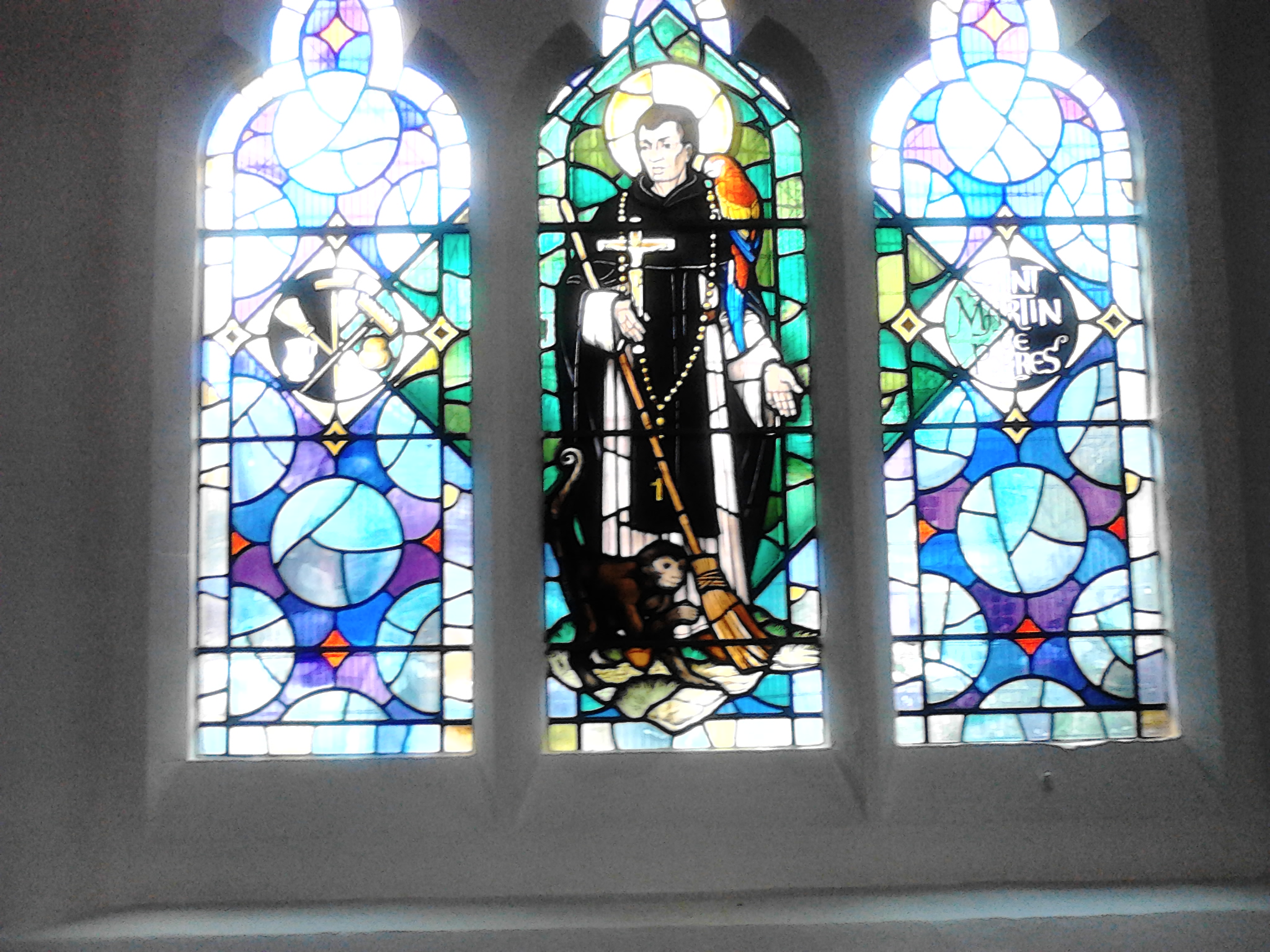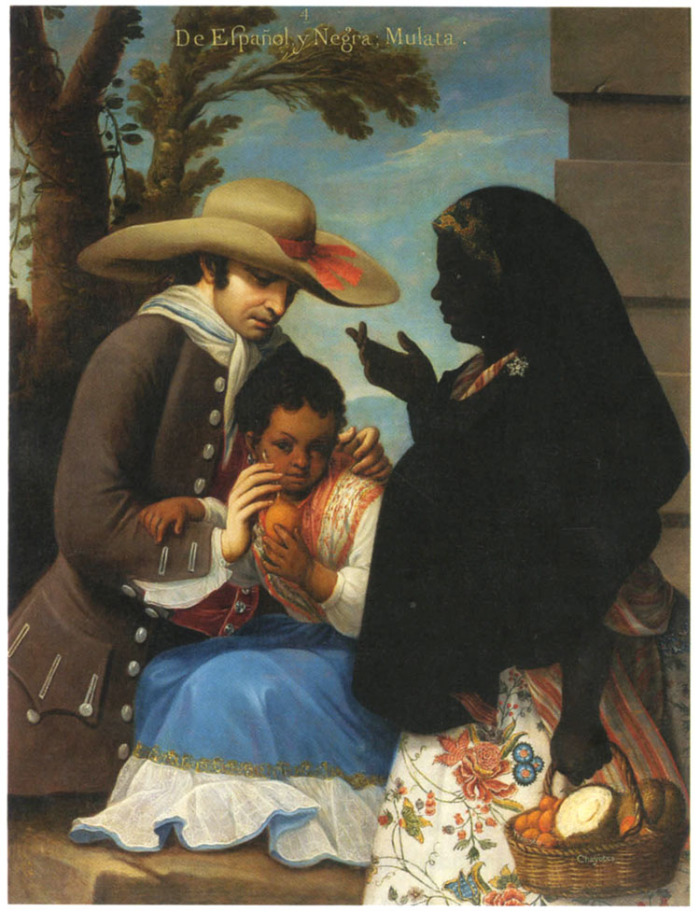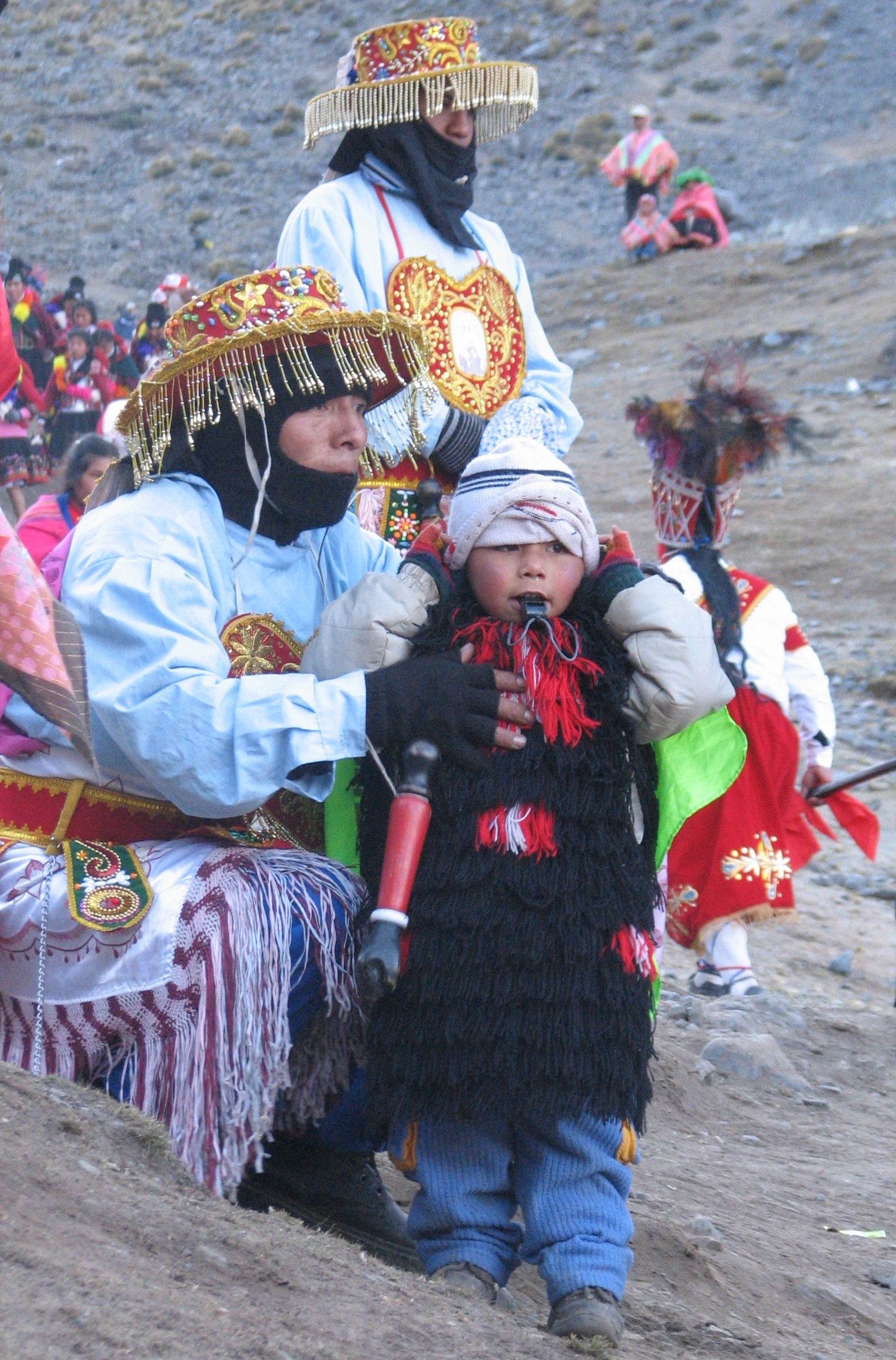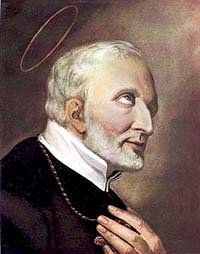|
Martin De Porres
Martín de Porres Velázquez (9 December 1579 – 3 November 1639) was a Peruvian lay brother of the Dominican Order who was beatified in 1837 by Pope Gregory XVI and canonized in 1962 by Pope John XXIII. He is the patron saint of mixed-race people, barbers, innkeepers, public health workers, and all those seeking racial harmony. He was noted for his work on behalf of the poor, establishing an orphanage and a children's hospital. He maintained an austere lifestyle, which included fasting and abstaining from meat. Among the many miracles attributed to him were those of levitation, bilocation, miraculous knowledge, instantaneous cures, and an ability to communicate with animals. Life Martin was born in the city of Lima, Viceroyalty of Peru, on 9 December 1579. He was the illegitimate son of a Spanish nobleman, Don Juan de Porras y de la Peña, and Ana Velázquez, a freed slave of African and Native descent. He had a sister named Juana de Porres, born two years later i ... [...More Info...] [...Related Items...] OR: [Wikipedia] [Google] [Baidu] |
Canonization
Canonization is the declaration of a deceased person as an officially recognized saint, specifically, the official act of a Christian communion declaring a person worthy of public veneration and entering their name in the canon catalogue of saints, or authorized list of that communion's recognized saints. Catholic Church Canonization is a papal declaration that the Catholic faithful may venerate a particular deceased member of the church. Popes began making such decrees in the tenth century. Up to that point, the local bishops governed the veneration of holy men and women within their own dioceses; and there may have been, for any particular saint, no formal decree at all. In subsequent centuries, the procedures became increasingly regularized and the Popes began restricting to themselves the right to declare someone a Catholic saint. In contemporary usage, the term is understood to refer to the act by which any Christian church declares that a person who has died is a sain ... [...More Info...] [...Related Items...] OR: [Wikipedia] [Google] [Baidu] |
Barbers
A barber is a person whose occupation is mainly to cut, dress, groom, style and shave men's and boys' hair or beards. A barber's place of work is known as a "barbershop" or a "barber's". Barbershops are also places of social interaction and public discourse. In some instances, barbershops are also public fora. They are the locations of open debates, voicing public concerns, and engaging citizens in discussions about contemporary issues. In previous times, barbers (known as barber surgeons) also performed surgery and dentistry. With the development of safety razors and the decreasing prevalence of beards in Anglophonic cultures, most barbers now specialize in cutting men's scalp hair as opposed to facial hair. Terminology In modern times, the term "barber" is used both as a professional title and to refer to hairdressers who specialize in men's hair. Historically, all hairdressers were considered barbers. In the 20th century, the profession of cosmetology branched off from ... [...More Info...] [...Related Items...] OR: [Wikipedia] [Google] [Baidu] |
Mulatto
(, ) is a racial classification to refer to people of mixed African and European ancestry. Its use is considered outdated and offensive in several languages, including English and Dutch, whereas in languages such as Spanish and Portuguese is not, and can even be a source of pride. A () is a female ''mulatto''. Etymology The English term and spelling ''mulatto'' is derived from the Spanish and Portuguese . It was a common term in the Southeastern United States during the era of slavery. Some sources suggest that it may derive from the Portuguese word (from the Latin ), meaning ' mule', the hybrid offspring of a horse and a donkey. The Real Academia Española traces its origin to in the sense of hybridity; originally used to refer to any mixed race person. The term is now generally considered outdated and offensive in non-Spanish and non-Portuguese speaking countries, and was considered offensive even in the 19th century. Jack D. Forbes suggests it originated in t ... [...More Info...] [...Related Items...] OR: [Wikipedia] [Google] [Baidu] |
Third Order Of Saint Dominic
The Third Order of Saint Dominic ( la, Tertius Ordo Praedicatorum; abbreviated TOP), also referred to as the Lay Fraternities of Saint Dominic or Lay Dominicans since 1972, is a Roman Catholic third order affiliated with the Dominican Order. Lay Dominicans are men and women, singles and couples living a Christian life with a Dominican spirituality in the secular world. They find inspiration following the same spiritual path taken by many saints, blesseds, and other holy men and women throughout the 800-year history of the Dominican Order. The Life of a Dominican layperson is all about having a passion for the Word of God. It is about committing one self to a community of like minded brothers and sisters that immerse themselves in the word of God. There are Lay Dominican provinces all around the world. Background Dominic de Guzmán established the ''Ordo Praedicatorum'' in 1215. There are four principal branches: * Friars - Formerly designated the "First Order", these are the bro ... [...More Info...] [...Related Items...] OR: [Wikipedia] [Google] [Baidu] |
Prior
Prior (or prioress) is an ecclesiastical title for a superior in some religious orders. The word is derived from the Latin for "earlier" or "first". Its earlier generic usage referred to any monastic superior. In abbeys, a prior would be lower in rank than the abbey's abbot or abbess. Monastic superiors In the Rule of Saint Benedict, the term appears several times, referring to any superior, whether an abbot, provost, dean, etc. In other old monastic rules the term is used in the same generic sense. With the Cluniac Reforms, the term ''prior'' received a specific meaning; it supplanted the provost or dean (''praepositus''), spoken of in the Rule of St. Benedict. The example of the Cluniac congregations was gradually followed by all Benedictine monasteries, as well as by the Camaldolese, Vallombrosians, Cistercians, Hirsau congregations, and other offshoots of the Benedictine Order. Monastic congregations of hermit origin generally do not use the title of abbot for t ... [...More Info...] [...Related Items...] OR: [Wikipedia] [Google] [Baidu] |
Almoner
An almoner (} ' (alms), via the popular Latin '. History Christians have historically been encouraged to donate one-tenth of their income as a tithe to their church and additional offerings as needed for the poor. The first deacons, mentioned in Acts 6:1–4, dealt with the distribution of the charity of the early Christian churches to needy members. Popes, bishops and Christian monarchs and organizations have since employed their own officers to organize their donations to the poor and needy. Such donations were referred to as alms and the officers as almoners and the position was one of considerable status. Roman Catholic Church The papal almoner, formally titled the "Almoner of His Holiness", is responsible for performing works of mercy on behalf of the pope. He is one of a small number of Vatican officials who continue in office when a pope dies or resigns. Until June 2022, he was a member of the papal household; since then he heads the Dicastery for the Service of C ... [...More Info...] [...Related Items...] OR: [Wikipedia] [Google] [Baidu] |
Indigenous Peoples In Peru
The Indigenous peoples of Peru, or Native Peruvians, comprise a large number of ethnic groups who inhabit territory in present-day Peru. Indigenous cultures developed here for thousands of years before the arrival of the Spanish in 1532. In 2017, the 5,972,606 Indigenous peoples formed about 26% of the total population of Peru. At the time of the Spanish arrival, the Indigenous peoples of the rain forest of the Amazon basin to the east of the Andes were mostly semi-nomadic tribes; they subsisted on hunting, fishing, gathering and slash and burn agriculture. Those peoples living in the Andes and to the west were dominated by the Inca Empire, who had a complex, hierarchical civilization. It developed many cities, building major temples and monuments with techniques of highly skilled stonemasonry. Many of the estimated 2000 nations and tribes present in 1500 died out as a consequence of the expansion and consolidation of the Inca Empire and its successor after 1533, the Span ... [...More Info...] [...Related Items...] OR: [Wikipedia] [Google] [Baidu] |
Spain
, image_flag = Bandera de España.svg , image_coat = Escudo de España (mazonado).svg , national_motto = '' Plus ultra'' ( Latin)(English: "Further Beyond") , national_anthem = (English: "Royal March") , image_map = , map_caption = , image_map2 = , capital = Madrid , coordinates = , largest_city = Madrid , languages_type = Official language , languages = Spanish , ethnic_groups = , ethnic_groups_year = , ethnic_groups_ref = , religion = , religion_ref = , religion_year = 2020 , demonym = , government_type = Unitary parliamentary constitutional monarchy , leader_title1 = Monarch , leader_name1 = Felipe VI , leader_title2 = Prime Minister , leader_name2 = Pedro Sánchez , legislature = ... [...More Info...] [...Related Items...] OR: [Wikipedia] [Google] [Baidu] |
Bilocation
Bilocation, or sometimes multilocation, is an alleged psychic or miraculous ability wherein an individual or object is located (or appears to be located) in two distinct places at the same time. Reports of bilocational phenomena have been made in a wide variety of historical and religious contexts, ranging from ancient Greek legends and Christian traditions to modern occultism. In ancient Greece The ancient Greek philosopher Pythagoras is said to have been capable of bilocation. According to Porphyry (writing several centuries after Pythagoras): A similar story is told of Apollonius of Tyana, who was supposedly present simultaneously in Smyrna and Ephesus. In religion and mysticism The concept of bilocation has been linked with shamanism, Theosophy, Islam (especially Sufism), and Jewish mysticism. Hinduism and Buddhism It is also one of the '' siddhis'' of Hinduism and Buddhism. Several prominent Hindu gurus, including Neem Karoli Baba, Sri Yukteswar,Yogananda, Paramaha ... [...More Info...] [...Related Items...] OR: [Wikipedia] [Google] [Baidu] |
Levitation (paranormal)
Levitation or transvection in the paranormal context is the rising of a human body and other objects into the air by mystical means. While believed by some in certain religious and New Age communities to occur as a result of supernatural, psychic or "energetic" phenomena, there is no scientific evidence of levitation ever occurring, and alleged cases of levitation can usually be explained by natural causes such as trickery, illusion, and hallucination. Religious views Various religions have claimed examples of levitation amongst their followers. This is generally used either as a demonstration of the validity or power of the religion, or as evidence of the holiness or adherence to the religion of the particular levitator. Buddhism * It is recounted as one of the Miracles of Buddha that Gautama Buddha ''walked on water'' levitating (crossed legs) over a stream in order to convert a brahmin to Buddhism. * Yogi Milarepa, a Vajrayana Buddhist guru, was rumored to have possesse ... [...More Info...] [...Related Items...] OR: [Wikipedia] [Google] [Baidu] |
Vegetarianism
Vegetarianism is the practice of abstaining from the consumption of meat ( red meat, poultry, seafood, insects, and the flesh of any other animal). It may also include abstaining from eating all by-products of animal slaughter. Vegetarianism may be adopted for various reasons. Many people object to eating meat out of respect for sentient animal life. Such ethical motivations have been codified under various religious beliefs as well as animal rights advocacy. Other motivations for vegetarianism are health-related, political, environmental, cultural, aesthetic, economic, taste-related, or relate to other personal preferences. There are many variations of the vegetarian diet: an ovo-lacto vegetarian diet includes both eggs and dairy products, an ovo-vegetarian diet includes eggs but not dairy products, and a lacto-vegetarian diet includes dairy products but not eggs. As the strictest of vegetarian diets, a vegan diet excludes all animal products, and can be acc ... [...More Info...] [...Related Items...] OR: [Wikipedia] [Google] [Baidu] |
Fasting
Fasting is the abstention from eating and sometimes drinking. From a purely physiological context, "fasting" may refer to the metabolic status of a person who has not eaten overnight (see " Breakfast"), or to the metabolic state achieved after complete digestion and absorption of a meal. Metabolic changes in the fasting state begin after absorption of a meal (typically 3–5 hours after eating). A diagnostic fast refers to prolonged fasting from 1 to 100 hours (depending on age) conducted under observation to facilitate the investigation of a health complication, usually hypoglycemia. Many people may also fast as part of a medical procedure or a check-up, such as preceding a colonoscopy or surgery, or before certain medical tests. Intermittent fasting is a technique sometimes used for weight loss that incorporates regular fasting into a person's dietary schedule. Fasting may also be part of a religious ritual, often associated with specifically scheduled fast days, as deter ... [...More Info...] [...Related Items...] OR: [Wikipedia] [Google] [Baidu] |






.jpg)
